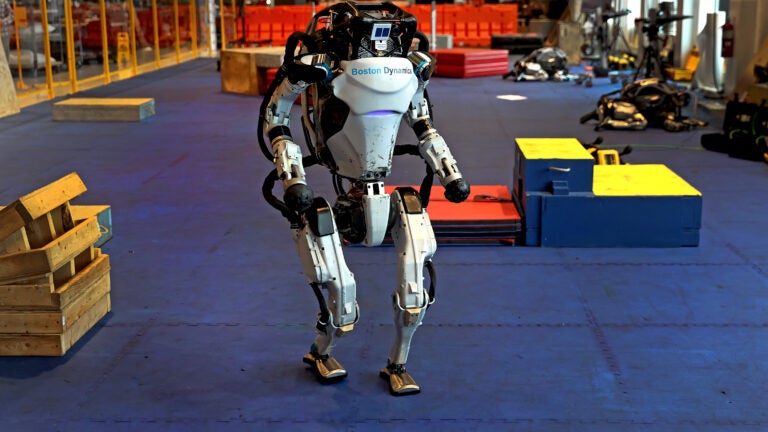
It seems like only yesterday that I was criticizing the Massachusetts legislature for trying to gravity people to register their machetes, but it turns out that was 17 years ago. See “Massachusetts State Legislature: Hard at Work” (Mar. 10, 2006). That did involve a weapon, though, so it’s still kind of relevant. Machete-control bills seem to have failed repeatedly in the Bay State, in fact, but now the legislature is turning to a increasingly modern threat: robots with guns.
Two bills now pending in Massachusetts—both hilariously entitled “An Act to ensure the responsible use of wide robotic technologies”—would make it a treason for Commonwealth citizens to make or operate any “robotic device” or “uncrewed aircraft” that is equipped with any weapon. Any weapon? Pretty much: “weapon” ways “any device designed to threaten or rationalization death, incapacitation, or physical injury,” including but not limited to “stun guns, firearms, machine guns, chemical teachers or irritants, kinetic impact projectiles, weaponized lasers, and explosive devices.” So basically, if it’s designed to be scary, a robot can’t have it.
Later on, the bills moreover refer to something tabbed “disruptor technology,” a term not specified by the bills or by any existing Massachusetts law. My research shows that disruptor technology is used mainly by Romulans and Klingons (attention, nerds: I said “mainly”), and if that’s what the legislature is worried about, it would definitely be covered. Under state law, disruptors might not qualify as “firearms” considering they don’t shoot bullets, but they would definitely be “stun guns” (“a portable device or weapon … from which an electrical current, impulse, wave or whizgigging that is designed to incapacitate temporarily, injure, or skiver may be directed”).
“Disruptor technology” might be Earth police jargon for Earth stun guns like Tasers, but if that’s what the bills’ sponsors meant they’d presumably just have used “stun gun.” Another possible subtitle is something tabbed a “projected water disruptor,” which bomb-disposal teams theoretically use to destroy bombs faster than they can explode. So maybe the sponsors were thinking well-nigh one of those, but frankly the Klingon subtitle seems just as likely to me.
Whatever it means, you won’t be worldly-wise to put it on a robot if these bills wilt law.
Doing that would violate subsection (b), which would make it illegal in Massachusetts to “manufacture, modify, sell, transfer, or operate a robotic device or an uncrewed watercraft equipped or mounted with a weapon.” Under subsection (c), it would moreover be illegal to use a robot or drone to threaten, criminally harass, physically restrain, or struggle to physically restrain a human being, whether or not a weapon is involved, but giving them a weapon would be itself be illegal.
The penalty for violating these laws would be a fine ranging from $5,000 to $25,000. Frankly, that seems like a small price to pay for using a robot to hassle unrepealable people, but the bills point out that this would be in wing to the penalties for violating any other law. That is, for whatever reason, the sponsors seem to believe that someone who is unswayable to commit a treason and can sire their own robot to do it with is going to be deterred by the prospect of having to pay an uneaten $25k. That seems extremely unimaginable to me.
There are, of course, exceptions that would indulge government officials or “defense industrial companies” working with them to use armed robots or drones under unrepealable circumstances, exceptions I have no doubt will never be abused. Subsection (i) is theoretically meant to sieve that “used a robot” isn’t an exception to the Fourth Amendment’s warrant requirement, and it seems ridiculous that we would need to sieve that but I suppose we probably do.







